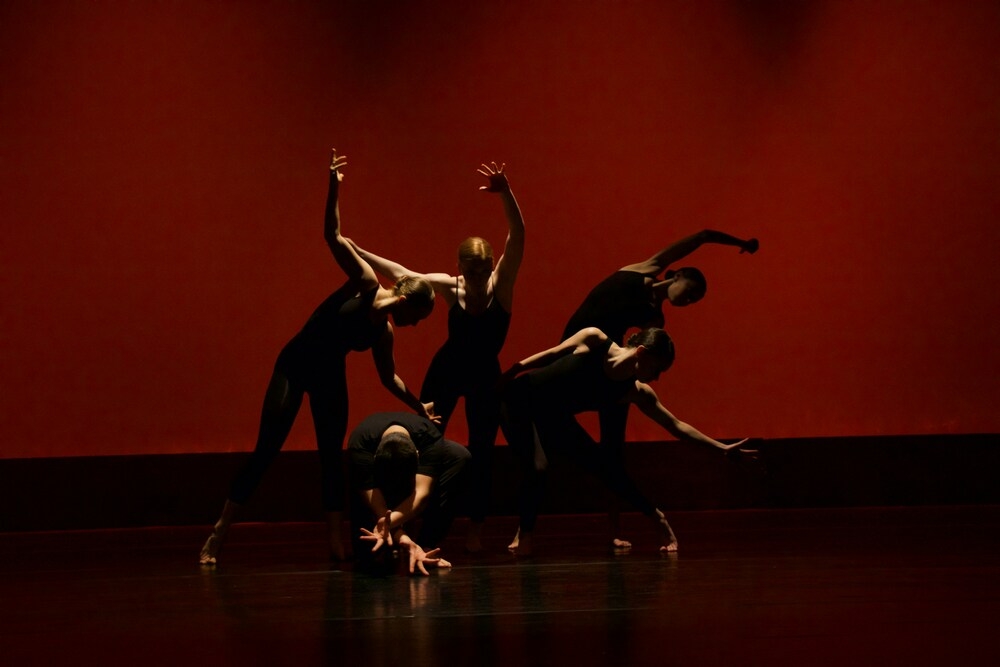Music for contemporary dance classes
Explore the art of blending music with contemporary dance in this captivating guide. Learn how the right music can transform dance classes, inspire choreographers, and elevate performances. Dive in and let the rhythm move you!
There's more music!
That's only the tip of the iceberg. We have many more songs, all available with our lifetime licenses:
Why you should purchase from us
Discover the simplest and most cost-effective way to secure a lifetime license – pay once and never worry about account creation or password hassles again! Our licenses are your ticket to the best music, valid for any project, forever.
Get your license now!Use our music on...
Music Plans
Pay once, use for a lifetime
You’ll never have to worry again about copyrights or claims.
Starter
Suited for personal projects and social media (Youtube not included)
$49 / forever
Buy plan- Personal projects
- Social Media
- Clients work
- Online Advertising
- TV, Cinema and Radio
Personal
Most popular
Ideal for Youtube. apps, podcast and gameplays. Unlimited downloads and channels.
$99 / forever
Buy plan- Social Media
- Youtube & Streaming
- Apps & Videogames
- Clients work
- Online Advertising
- TV, Cinema and Radio
Business
Ideal if you're a freelancer or a business. All covered, unlimited downloads and channels
$199 / forever
Buy plan- Any Possible Use Case
- Clients work
- Online Advertising
- TV, Cinema and Radio
👉No need to create an account
👉A lifetime license, forever
👉No more ‘clearing’ channels
We currently offer 241 songs from 30 different genres
Testimonials
Don't take our word for it
“I was skeptical at first but Legis Music has exceeded my expectations. Their music library is diverse and constantly updated, making it easy to find the perfect track for any project. Plus, the peace of mind that comes with that royalty-free license is priceless.”

“@legismusic has made my life as a video editor so much easier. The lifetime license is a no-brainer and the fact that I don’t have to worry about clearing channels or getting copyright strikes is a huge weight off my shoulders. The affordable cost and extensive music library make it the go-to source for all my music needs.”

“As a podcast creator, finding the right music to complement my content can be a challenge, but Legis Music has made it so easy. Their lifetime licenses are affordable and the fact that I can use the music on Spotify and Apple Music is a huge relief. A no-brainer for any podcaster.”

“I was blown away by the value offered by Legis Music's lifetime royalty-free licenses. The cost is incredibly affordable and having the peace of mind to use the music for my clients without worrying about copyright strikes is priceless. I highly recommend this to anyone in need of music for their projects.”

“It was important for me to find a cost-effective solution for my company’s music needs. Legis Music’s business plan was the perfect fit and the lifetime licenses have been a game-changer. We can now use the music for all of our projects without any worries about copyright strikes. Highly recommend to any business in need of music.”

“The quality of the music is top-notch, and the licensing terms are crystal clear, saving me from any copyright hassles.”

“Legis Music has improved the way I create content. The selection of royalty-free music is great and the quality is unbeatable. I can now add the perfect sound to my videos without any stress or added costs. Highly recommended!”

“I've been using Legis Music for my YouTube channel for the past few months, and I couldn't be happier with the service.”

“As a video game creator, having access to high-quality music for my games is crucial. @legismusic lifetime licenses are a steal and the fact that I don’t have to worry about any type of copyrights in the future is a huge relief. The extensive library makes it easy to find the perfect tracks for my games.”

“The audio quality is excellent, and I've never experienced any copyright issues since using their music. The licensing terms are transparent, which is essential for content creators like myself.”

“As a freelance producer, I need to keep costs down and Legis Music has been a huge help for me. The user-friendly platform and affordable pricing make it easy for me to access top-notch music for my clients. Anyone in need of royalty-free music should give it a shot.”

Key Takeaways
- Integral Role of Music: Music is not merely a backdrop in contemporary dance; it is a vital component that guides movement, influences the emotional landscape, and fosters creativity within the dance experience.
- Strategic Music Selection: Choosing music for dance involves considering emotional resonance, rhythmic compatibility, musical quality, variety, and appropriateness for the dancers’ age and skill level, aiming to enhance both the learning environment and the performance.
- Impact of Tempo and Rhythm: The tempo and rhythm of music significantly affect dance movement and expression, with faster tempos encouraging energetic movements and slower tempos allowing for more detailed, expressive movements.
- Diverse Musical Genres Enrich Dance: Incorporating a wide range of musical genres, from classical to electronic and popular music, provides a rich palette for choreography and class exercises, inviting emotional and thematic exploration.
- Collaboration Fosters Innovation: Interactive music selection and collaboration between dancers and musicians can lead to innovative and unexpected creative outcomes, enhancing the dance piece’s depth and dynamism.
- Technology as a Resource: Leveraging technology, including music streaming platforms and editing software, is crucial for discovering, selecting, and customizing music to fit specific dance pieces or class needs.
- Availability of Resources: A wealth of resources, including recommended playlists, music discovery apps, and collaborative platforms, supports dance professionals in finding and selecting appropriate music, encouraging continuous exploration and learning.
- Continuous Exploration and Dialogue: The article emphasizes the importance of ongoing exploration and open dialogue between the worlds of music and dance, advocating for an environment that nurtures innovation and supports the evolving relationship between these two art forms.
The symbiotic relationship between music and dance transcends cultures and eras, embodying the essence of artistic expression.
In the realm of contemporary dance, this connection deepens, as music not only complements but often inspires the creation and performance of dance pieces.
This article delves into the pivotal role that music plays in contemporary dance classes, exploring how it influences movement, emotion, and creativity.
Through an insightful guide, we aim to equip dance instructors, students, and enthusiasts with the knowledge to select and utilize music that enhances the contemporary dance experience.

Importance of music in contemporary dance
Music serves as the heartbeat of contemporary dance, providing a rhythmic foundation that guides the flow of movement and the expression of emotions.
It acts as a catalyst for creativity, enabling choreographers and dancers to explore new territories of expression and storytelling.
The right music can elevate a dance piece, transforming it into an immersive experience that resonates with both performers and audiences.
In the context of dance classes, music is not just a background element but a dynamic partner in the dance process, facilitating learning, improvisation, and the development of a dancer’s personal style.
Understanding contemporary dance
To fully appreciate the significance of music in contemporary dance, it is essential to grasp what contemporary dance entails.
Unlike classical ballet, contemporary dance is not tethered to rigid techniques or storytelling norms.
It is a fluid, expressive form of dance that incorporates elements from various dance styles, including modern, jazz, lyrical, and ballet.
Historical Context
Contemporary dance emerged in the mid-20th century as a rebellion against the strictures of traditional ballet.
Pioneers like Isadora Duncan, Martha Graham, and Merce Cunningham sought to create a dance form that embraced freedom of movement, emotional expression, and the human experience.
Music was integral to this new dance form, with composers and musicians collaborating closely with choreographers to create pieces that reflected contemporary themes and narratives.
The role of music in contemporary dance
In contemporary dance, music is more than just a backdrop; **it is a vital component of the performance. **
It shapes the choreography, influencing the pace, mood, and structure of the dance.
Dancers often rely on musical cues for timing and coordination, especially in complex group pieces.
The choice of music can also dictate the thematic direction of a dance, with certain pieces inspiring choreographers to explore specific emotions or stories.
Characteristics of contemporary dance music
Contemporary dance music is as diverse as the dance form itself, encompassing a wide range of genres and styles.
It can be lyrical or abstract, harmonic or dissonant, rhythmic or atonal.
This diversity allows for a broad spectrum of emotional and thematic exploration in dance.
Music for contemporary dance often challenges traditional musical structures, reflecting the dance’s emphasis on innovation and experimentation.
By understanding contemporary dance and its historical roots, **we can better appreciate the intricate relationship between dance and music. **
This foundation sets the stage for exploring how to select and utilize music in contemporary dance classes, enhancing the creative process and the overall experience for dancers and audiences alike.
Selecting music for classes
The process of selecting music for contemporary dance classes is both an art and a science, requiring a deep understanding of the dance’s objectives, the emotional tone desired, and the physical capabilities of the dancers.
Criteria for choosing music
- Emotional resonance: The music should evoke emotions and moods that align with the choreography’s intent, enabling dancers to connect more deeply with the movement.
- Rhythmic compatibility: The tempo and rhythm of the music should complement the choreography’s pace, allowing dancers to synchronize their movements with precision.
- Musical quality: High-quality recordings with clear sound are essential for dancers to hear all aspects of the music, from the beat to the nuances of the melody and harmony.
- Variety: Incorporating a variety of musical genres and styles can keep classes engaging and expose dancers to a wide range of emotional and rhythmic experiences.
- Appropriateness: The music should be suitable for the age and skill level of the dancers, with complexity and themes that match their understanding and capabilities.
The impact of music tempo on movement
Tempo plays a crucial role in defining the energy and flow of a dance piece.
Fast tempos can energize and motivate, leading to more dynamic and powerful movements.
In contrast, slow tempos can facilitate detailed, expressive movements, **allowing dancers to explore subtlety and nuance. **
The choice of tempo should reflect the choreographic intent and the physical abilities of the dancers, creating an environment where movement and music are in perfect harmony.
Emotional expression through music
Music has the profound ability to convey emotions that words cannot, making it an invaluable tool for expressing complex feelings and narratives in dance.
The choice of music can set the tone for a piece, from joy and love to despair and anger.
By carefully selecting music that aligns with the emotional journey of the dance, instructors can guide dancers in exploring and expressing a range of emotions through their movements.
Genres and sources of music
Contemporary dance’s versatility is reflected in the wide array of music genres that can accompany it, each bringing its unique flavor and emotional depth to the dance floor.
Classical music in Contemporary Dance
Classical music, with its rich harmonies and emotional depth, offers a timeless foundation for contemporary dance.
The complexity of classical compositions allows for intricate choreographic structures, providing a vast landscape for movement exploration.
Electronic and ambient music
Electronic and ambient music, with their synthesized sounds and often repetitive rhythms, **can create an immersive atmosphere for contemporary dance. **
These genres offer a modern soundscape that can complement abstract and innovative choreographies.
World music and its influence
Incorporating world music into contemporary dance classes can introduce dancers to the rhythms, melodies, and cultural stories of different regions.
This diversity enriches the dance experience, promoting a global understanding and appreciation of movement and music.
Contemporary and experimental music
Contemporary and experimental music push the boundaries of traditional music composition, **offering new sounds and structures that can inspire equally innovative dance pieces. **
These genres challenge dancers to adapt to unconventional rhythms and phrasing, fostering creativity and adaptability.
Utilizing popular music
Popular music, with its widespread appeal and emotional accessibility, can be a powerful tool for engaging dancers.
Its familiar melodies and rhythms can make contemporary dance more approachable for beginners, while still offering depth for more advanced exploration.
By exploring a broad spectrum of musical genres, **dance instructors can create a rich, varied soundtrack for their classes. **
This diversity not only enhances the dance experience but also broadens the dancers’ musical horizons, contributing to their overall artistic development.
Music for warm-up and cool-down
The segments of warm-up and cool-down are crucial in dance classes, **preparing the body for physical exertion and facilitating recovery afterward. **
The music chosen for these parts of the class plays a significant role in setting the tone and ensuring the effectiveness of these processes.
Recommended tracks and composers
- Warm-Up: For warm-ups, music with a steady, moderate tempo is ideal, as it helps elevate the heart rate gradually. Composers like Max Richter or Ólafur Arnalds offer tracks that blend minimalistic sounds with steady rhythms, perfect for beginning a class. Upbeat tracks from artists like Daft Punk or Calvin Harris can also energize dancers, preparing them mentally and physically for the session.
- Cool-Down: The cool-down phase benefits from slower, soothing tracks that help lower the heart rate and relax the muscles. Ludovico Einaudi or Brian Eno’s ambient pieces can provide a calming atmosphere, helping dancers to unwind and reflect on the class.v
Tempo and rhythm considerations
Selecting music with the appropriate tempo for warm-ups and cool-downs is vital.
A gradual increase in tempo can mirror the physical intensification of the warm-up exercises, while a decrease in tempo towards the end of the class can signal the body to begin the recovery process.
Incorporating music with clear, rhythmic patterns can also assist in the execution of stretching and strengthening exercises, making these phases more effective.
Music for technique and choreography
Music serves as a powerful tool in the development of technical skills and the creation of choreography in contemporary dance.
It not only influences the pace and mood of the dance but also enhances the learning experience by connecting movement with rhythm and emotion.
Enhancing technical skills through music
In teaching technical aspects of contemporary dance, music with varying rhythms and structures can challenge dancers to adapt their movements and timing.
For instance, complex time signatures or unexpected tempo changes can improve a dancer’s musicality and timing, essential components of dance technique.
Classical pieces, for example, often feature these complexities and can be particularly useful in classes focusing on precision and fluidity.
Music selection for choreography
Selecting music for choreography involves a deep understanding of both the music and the narrative or emotional journey of the piece.
Choreographers might start with a piece of music that inspires them and build movements that embody the music’s emotions and dynamics.
Alternatively, they may start with a concept or emotion and seek music that complements or contrasts with their vision.
This collaborative process between music and movement allows for the creation of compelling and cohesive dance pieces.
Creating mood and atmosphere
Music is instrumental in setting the mood and atmosphere of a dance piece.
The choice of music can transform the space and influence the audience’s emotional response.
For instance, a haunting melody can create a sense of mystery and anticipation, while a vibrant, upbeat track can evoke feelings of joy and excitement.
The ability to manipulate mood through music selection is a powerful tool for choreographers, enabling them to convey complex emotions and narratives through their dance pieces.
By thoughtfully selecting music for warm-up, cool-down, technique training, and choreography, dance instructors and choreographers can greatly enhance the dance experience.
Music not only prepares the body and mind for dance but also deepens the connection between dancers and their movements, allowing for a more expressive and emotive performance.
Interactive music selection
Interactive music selection involves a collaborative approach to choosing music, **engaging both dancers and musicians in the process. **
This approach can significantly enhance the creative process, leading to more cohesive and dynamic dance pieces.
Collaboration between dancers and musicians
Collaboration between dancers and musicians can take many forms, from live improvisation sessions where musicians respond in real-time to dancers’ movements, to more structured collaborations where dancers and musicians co-create a piece from the ground up.
This partnership allows for a deeper exploration of the relationship between movement and sound, often leading to innovative and unexpected results.
For example, a musician might alter the tempo or rhythm in response to a dancer’s movement, or a dancer might modify their choreography to better match the musical accompaniment.
Improvisation and spontaneity
Improvisation plays a crucial role in the interactive selection of music for contemporary dance.
Encouraging dancers to move freely to a variety of musical styles can spark creativity and reveal new movement patterns that might not emerge in a more structured setting.
This spontaneity can be incredibly valuable in the choreographic process, **leading to the discovery of unique combinations of movement and music. **
Additionally, improvisation sessions can help dancers develop a more intuitive connection to music, enhancing their ability to express themselves through dance.
Technology and music
The advent of technology has transformed how dance instructors and choreographers find, select, and use music in contemporary dance.
From streaming services to music editing software, technology offers a wealth of resources for customizing the musical experience to fit the needs of any dance class or choreography.
Apps and platforms for music selection
Streaming platforms like Spotify and Apple Music have made it easier than ever to discover and access a vast array of music from various genres and artists.
Many of these platforms offer curated playlists that are specifically designed for dance, providing a convenient starting point for instructors looking for music.
Additionally, apps like Shazam can help identify songs and tracks that instructors might hear in passing, expanding their musical repertoire.
Creating and editing music for dance
For more customized music needs, **technology offers solutions through software and apps capable of editing and creating music. **
Programs like GarageBand , Ableton Live , and Audacity allow choreographers and instructors to tailor music to the precise needs of their dance pieces, adjusting tempo, adding effects, or even composing original pieces.
This level of customization can be particularly useful for creating music that matches the specific duration, mood, and intensity required for a piece of choreography.
By leveraging technology, dance professionals can navigate the vast musical landscape more efficiently, finding and creating the perfect soundtrack for their contemporary dance classes and performances.
This accessibility to a diverse range of music, coupled with the ability to customize tracks, has opened up new possibilities for creative expression in contemporary dance, making the collaboration between movement and music more dynamic and tailored than ever before.
Resources
Providing dancers, choreographers, and instructors with a comprehensive list of resources is essential for facilitating the exploration of music in contemporary dance.
This section can serve as a guide to finding music, learning about music-dance integration, and discovering new tools and technologies.
Recommended playlists and albums
Curating a list of recommended playlists and albums across various music streaming platforms can serve as a valuable tool for dance professionals looking for inspiration.
These recommendations might include a range of genres suitable for warm-ups, technique classes, improvisation, and performances, offering a broad spectrum of musical choices to suit different needs.
Websites and apps for discovering music
Highlighting websites and apps dedicated to music discovery can empower dance professionals to expand their musical repertoire.
Platforms like Bandcamp , SoundCloud , and YouTube offer access to both mainstream and independent artists, providing a rich source of music that might not be available on traditional streaming services.
Additionally, apps designed for discovering and organizing music specifically for dance classes can streamline the process of preparing for and conducting classes.
Learning and collaboration platforms
Finally, pointing to online forums, workshops, and courses that focus on the intersection of music and dance can encourage continuous learning and collaboration within the dance community.
These platforms can offer opportunities for dance professionals to connect, share experiences, and learn from each other, fostering a supportive and innovative environment for exploring the relationship between music and dance.
By delving into case studies and interviews, and providing a comprehensive list of resources, this guide aims to enrich the understanding and application of music in contemporary dance, offering practical insights and inspiration for dance professionals at all levels of their career.
Conclusion
The intricate relationship between music and contemporary dance is both profound and essential, embodying the shared pulse of artistic expression.
Through the exploration of this dynamic interaction, we’ve uncovered the multifaceted roles that music plays in dance education, choreography, and performance.
It serves as a foundation for movement, an inspiration for creativity, and a medium for emotional and thematic exploration.
The selection and utilization of music in contemporary dance classes are not merely supplementary but integral to the cultivation of an immersive and responsive dance experience.
The guidance offered in this article, from understanding the historical context of contemporary dance to leveraging technology for music selection, aims to equip dance instructors, choreographers, and enthusiasts with the knowledge and resources to deepen their engagement with music.
By embracing a collaborative and exploratory approach to music selection, the dance community can foster a more inclusive and innovative environment that celebrates the diversity of human expression.
The case studies and interviews highlighted the value of shared creative processes, illustrating how collaborative endeavors between dancers and musicians can lead to groundbreaking art.
Moreover, the recommended resources serve as a starting point for further exploration, encouraging an ongoing dialogue about the role of music in dance.
In conclusion, the synergy between music and contemporary dance enriches both art forms, creating a more vibrant and emotive landscape for artists to explore.
As we continue to push the boundaries of what is possible in contemporary dance, let us remember the power of music to move, inspire, and transform.
It is our hope that this guide will serve as a valuable resource for those looking to deepen their understanding and appreciation of this dynamic relationship, paving the way for future innovations in dance.